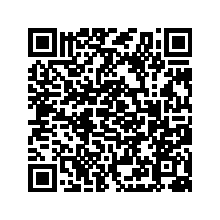Towards Practical Quantum Information Processing: Atom-Nanophotonic Interfaces and HiQ Software Platform
2018年12月28日 14:30
主讲人 (Speaker): 戚晓东
主讲人单位 (Speaker's Institute): 华为技术有限公司数据中心
邀请人 (Invited by): 罗乐
时间 (Time): 星期五, 2018/12/28 - 14:30 to 15:30
地点 (Location): 珠海校区海滨红楼17栋107会议室
摘要 (Abstract):
Strong coupling between atoms and light is critical for quantum information processing and precise sensing. A nanophotonic waveguide is a promising platform for realizing an atom-light interface that reaches the strong coupling regime. We study the dispersive response theory of the nanowaveguide system as the means to create an entangling atom-light interface, with applications to quantum non-demolition (QND) measurement, spin squeezing and quantum computing. We propose an enhanced QND measurement and spin squeezing protocol based on the Faraday effect, which is modeled using first-principles stochastic master equations and Green’s function method. We simulate the metrological squeezing effect for a nanofiber and a square waveguide. Counterintuitively, by placing the atoms at an azimuthal position where the guided probe mode has the lowest intensity, we increase the cooperativity while minimize decoherence. We find 6.3 dB and 13 dB of peak squeezing for the nanofiber and the square waveguide, respectively, with 2500 atoms.
We generalize the Green’s function method to solve the many-body interaction problem due to photon scattering on an optical lattice. We propose a scalable quantum random walker with an atom-nanowaveguide interface. We show that this platform can be used to study Boson sampling problems and to demonstrate advantages of quantum computing with scalable optimal control technique.
Last but not least, I will briefly introduce the HUAWEI HiQ quantum computing software and cloud service, which provide the largest quantum circuit simulators available on public clouds to-date and a full-stack classical-quantum programming framework. Huawei will continue to work with partners and is open to researchers in the field to boost the fundamental research and engineering towards practical quantum information processing.
原子与光之间的强耦合对量子信息处理和精确传感至关重要。纳米光子波导是用于实现达到强耦合状态的原子-光界面的有前途的平台。我们研究纳米波导系统的色散响应理论,作为产生纠缠原子-光界面的手段,应用于量子非破坏(QND)测量,自旋压缩和量子计算。我们提出了一种基于法拉第效应的增强型QND测量和自旋压缩协议,该协议使用第一性原理随机主方程和格林函数方法建模。我们模拟纳米纤维和方波导的计量挤压效应。与直觉相反,通过将原子置于引导探针模式具有最低强度的方位角位置,我们增加了协同性,同时最小化了退相干。我们发现纳米纤维和方波导的峰值压缩分别为6.3 dB和13 dB,分别为2500个原子。
我们推广格林函数方法来解决由于光子晶格上的光子散射引起的多体相互作用问题。我们提出了一种具有原子-纳米波导接口的可扩展量子随机游走器。我们表明,该平台可用于研究玻色子采样问题,并通过可扩展的最优控制技术展示量子计算的优势。
最后但并非最不重要的是,我将简要介绍HUAWEI HiQ量子计算软件和云服务,它们提供迄今为止公共云上可用的最大量子电路仿真器和全栈经典量子编程框架。华为将继续与合作伙伴合作,并向该领域的研究人员开放,以促进实际量子信息处理的基础研究和工程。
主讲人简介 (Speaker's CV):
戚晓东,目前就职于华为技术有限公司杭州数据中心,担任量子信息技术高级工程师。 Xiaodong Qi is working at the Hangzhou Data Center of Huawei Technologies Co., Ltd., he is a senior engineer in quantum information technology.



